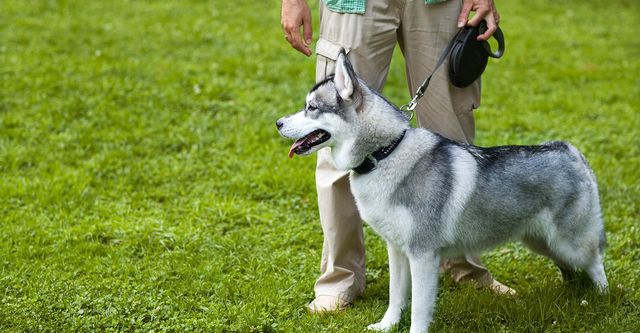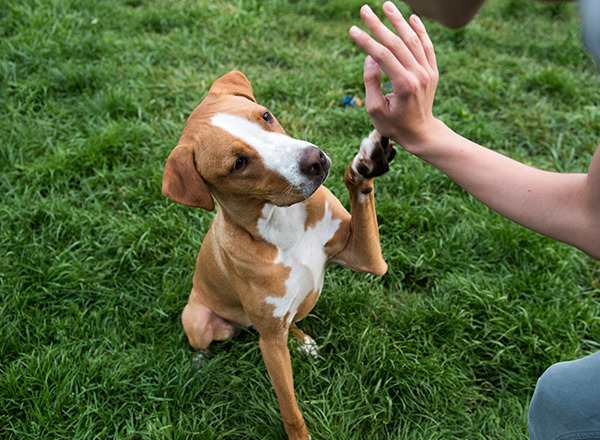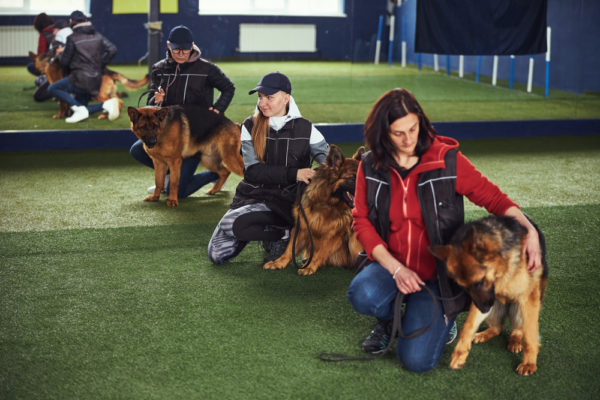Professional Dog Training Rochester NY for All Types of Behavioral Needs
Professional Dog Training Rochester NY for All Types of Behavioral Needs
Blog Article
Newbie's Overview to Successful Canine Training at Home
Efficiently training a canine at home requires a nuanced understanding of canine actions and reliable communication techniques. Establishing clear training goals, making use of premium rewards, and maintaining uniformity across family members are critical aspects. Integrating training right into everyday regimens can boost both interaction and retention.
Understanding Dog Actions
Comprehending canine behavior is important for efficient training and cultivating a harmonious relationship between people and their canine friends - Puppy Training. Dogs connect mostly via body movement, articulations, and faces, making it essential for proprietors to interpret these signals properly. Acknowledging behaviors such as tail wagging, growling, or cowering can offer understandings into a dog's mood and intents
Moreover, recognizing the natural impulses of pet dogs, such as their pack mindset, assists owners establish leadership functions within the household. This is vital for creating a structured setting where canines really feel secure and are a lot more responsive to training. Canines are likewise influenced by their socializing experiences; early direct exposure to different environments, individuals, and various other animals can significantly form their actions later on in life.
Common behavior problems, such as hostility, anxiety, or excessive barking, frequently originate from misunderstandings or unmet demands. Observing and attending to these issues without delay can stop rise and guarantee a positive training experience. By promoting a deep understanding of pet dog habits, proprietors can customize their training approaches to match their canine buddies, inevitably resulting in a contented and mannerly family pet.

Vital Educating Devices
A fully equipped training space can dramatically improve the efficiency of canine training at home. Essential training devices make sure that both the trainer and the pet can take part in effective sessions that cultivate understanding and bonding.

Spending in a tough chain and a comfy, well-fitting collar or harness is essential for safety and control. These devices help establish limits and ensure the pet remains safe throughout training. Furthermore, a designated training area, without distractions, help focus for both the pet dog and the fitness instructor.
Training aids such as training pads, cones, or dexterity equipment can additionally improve the experience by presenting selection and obstacles. Lastly, having a notebook or digital app for tracking progression can be indispensable, permitting you to note successes and areas for improvement. Utilizing these necessary tools will develop a positive training environment and lay the structure for effective learning.
Creating a Training Regimen
Establishing a regular training routine is important for effective pet training in your home. A well-structured routine not only aids in enhancing desired behaviors yet additionally gives your dog with a sense of protection and predictability. To create an efficient training look at more info routine, start by determining particular training goals, such as standard commands, leash strolling, or housebreaking.
Pick an assigned time each day for training sessions, ideally when your pet is alert and receptive. Sessions needs to be short, approximately 5 to 15 mins, to keep emphasis and avoid tiredness. Consistency in timing and atmosphere will improve your canine's discovering experience.
Integrate training into everyday tasks to reinforce skills. Practice commands during walks or nourishment, which incorporates finding out into natural routines. Furthermore, continue to be adaptable and readjust the routine as essential, accommodating your canine's energy levels and state of mind.
Favorable Reinforcement Strategies

When carrying out positive reinforcement, it is vital to choose benefits that are encouraging for your canine. High-value deals with, such as tiny pieces of hen or cheese, can be particularly reliable during training sessions. In addition, varying the incentives can preserve your pet's rate of interest and excitement.
Begin with straightforward commands, like "rest" or "stay," and slowly progress to a lot more complex jobs. Uniformity is essential; make sure that all member of the family use the exact same commands and reward systems to prevent complication.
In addition, it is important to continue to be individual and stay clear of stress. Pets, like humans, find out at their own pace. By cultivating an encouraging training setting with positive reinforcement, you can improve your canine's understanding experience while reinforcing the bond between you and your furry companion, laying the groundwork for successful training results.
Common Educating Challenges
While training a dog in the house can be a gratifying experience, it usually comes with a collection of usual difficulties that can check both patience and consistency. One widespread problem is diversion. Pet dogs might end up being quickly sidetracked by noises, movements, or even scents in their environment, making it difficult to maintain their focus during training sessions.
An additional challenge is variance in commands and reinforcement. It can reference hinder and confuse the dog progression if household participants use different signs or benefits. Establishing a unified method is essential for effective communication.
In addition, pets can experience disappointment or anxiety, especially if they do not comprehend what is expected of them. This can cause unwanted actions, such as barking or chewing.
Finally, the timing of reinforcement is essential. Delayed benefits can diminish the performance of favorable reinforcement, as pets might fail to attach the habits with the reward.
Conquering these challenges calls for commitment, clear communication, and an organized training plan - Puppy Training. Identifying and attending to these usual challenges will certainly lead the way for a more effective and delightful training experience at home
Verdict
In verdict, effective pet training at home necessitates an extensive understanding of canine habits and efficient communication strategies. By developing clear training goals and utilizing high-quality deals with along with positive reinforcement, the training process becomes more satisfying for both the pet dog and the fitness instructor.
Establishing a consistent training regimen is vital for effective pet training at home.Positive support strategies are fundamental to reliable pet dog training, promoting desired actions with rewards rather than punishment. By promoting an encouraging training setting via favorable reinforcement, you can improve your pet dog's learning experience while reinforcing the bond between you and your furry buddy, laying the foundation for successful training outcomes.
In final thought, effective canine training at home requires a thorough understanding of canine behavior and efficient interaction techniques. By developing clear training goals and using high-quality treats along with favorable reinforcement, the training process comes to be much more rewarding for both the pet dog and the trainer.
Report this page